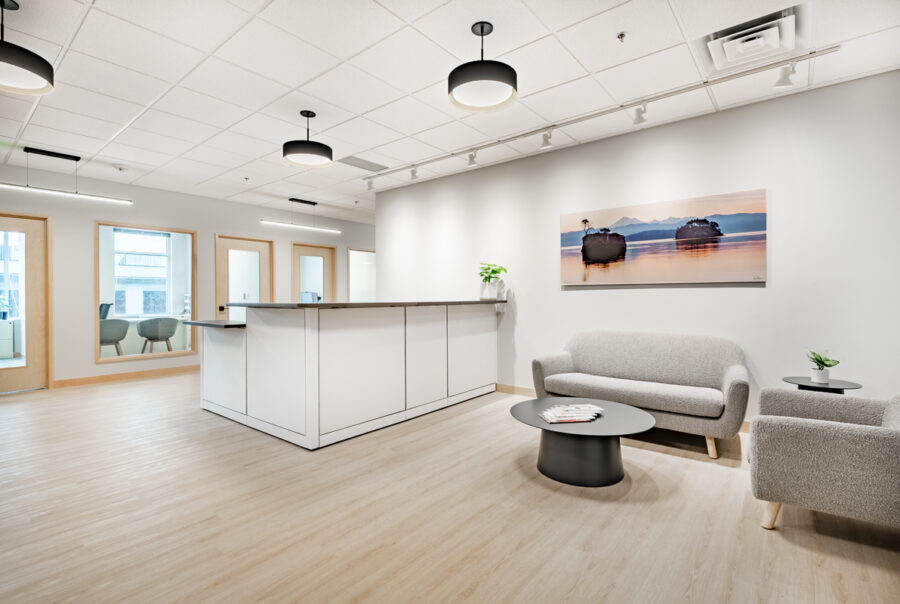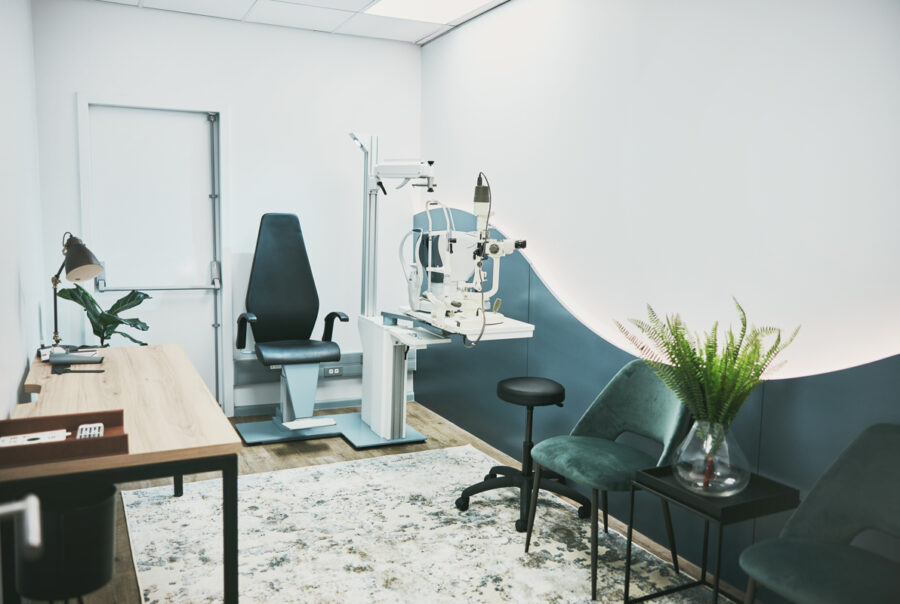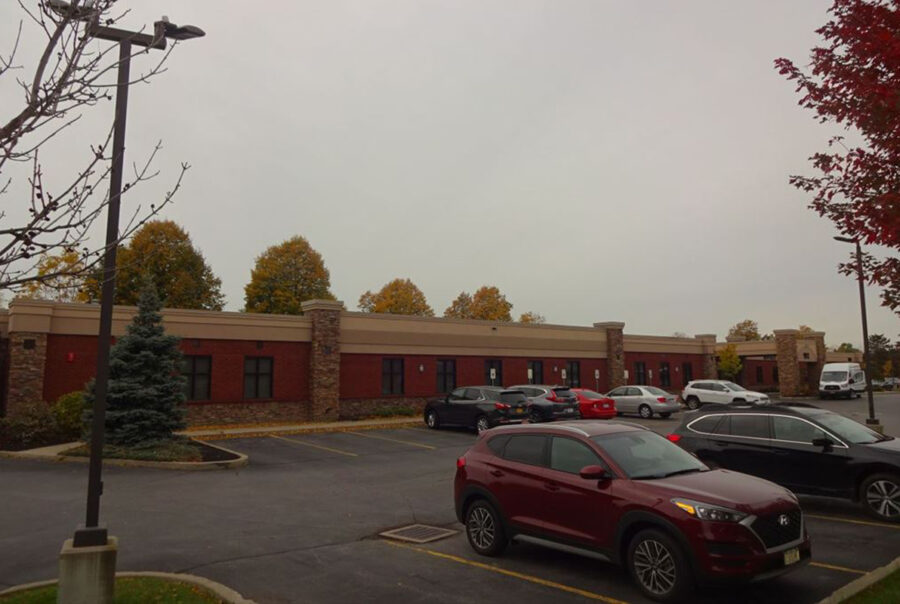Office
This playbook is your go-to resource for understanding the coverage needs of office-based businesses — from professional liability considerations to protections for equipment, property, and client-facing operations.
The following playbook is intended to provide guidance on Merchants’ appetite and most desired risk characteristics. Your Merchants team is available to speak about the entirety of a risk that may have characteristics not exactly fitting our desirability.
We also encourage you to refer to Merchants Appetite Guide under the Resources/Tools menu of the Commercial Gateway in Merchants agent portal website for class-specific eligibility.
Description of Operations
A place of business where professionals provide specialized services requiring advanced education, training, and expertise, such as those offered by doctors, lawyers, engineers, and architects, and is typically characterized by a neat and organized environment designed for work and client interactions.
Merchants Appetite
The following risk characteristics are intended to provide guidance on Merchants’ appetite. Your Merchants team is available to speak about the entirety of a risk that may have characteristics not exactly fitting our desirability. Refer to Merchants Appetite Guide under the Resources/Tools menu of the Commercial Gateway on merchantsgroup.com for class-specific eligibility.
Desirable Risks
- Offices that provide legal, medical, financial or professional services.
- In business and under current ownership / management for 3 years or more.
- Year-round operations
Ineligible
- Sales of directly imported goods
- Associations
- Banks and other Financial Institutions
- Charitable Organizations
- Collection, Credit or Loan Companies
- Detective, Inspection or Security Services
- Employee Leasing Companies / Temporary Help Agencies
- Medical Offices that include the following operations:
- Any premises used by ambulance services
- Any short-term or long-term rehabilitation facilities
- Any premises used for inpatient/outpatient surgical procedures
- Any premises used for physical therapy
- Any premises used as an ambulatory center
- Any premises used for emergency care
- Non-Profit Organizations
- Telemarketing Operations
Exposures
Understand the key risks office-based businesses face — and how client traffic, sensitive information, and equipment dependencies can impact insurance coverage and claims.
Automobile Exposure
Automobile exposure may be limited to hired and non-owned vehicles used for errands, off-site visits, or transporting materials. If vehicles are supplied to employees, there should be clear procedures in place regarding personal use by employees and their family members. All drivers should be properly licensed with acceptable motor vehicle records. Vehicles must be maintained in good condition with maintenance records kept in a central location. The age, training, experience, and records of each driver, as well as the age, condition, and maintenance of the vehicles, are all important items to consider.
Crime Exposure
Crime exposure comes from employee dishonesty, money and securities, and possible identity theft involving clients or patients. Businesses may also face fraud or misuse of proprietary information. Background checks should be conducted on all employees handling money or sensitive data. Ordering, billing, and disbursement should be handled by separate individuals, and regular monitoring or audits should be performed. Where payments are accepted on premises, deposits should be made regularly, and money should not be kept on site overnight. If inventory or supplies are present, storage should be secure and periodically reconciled.
Inland Marine Exposure
Inland marine exposures consist of accounts receivable, computers, professional or diagnostic equipment, and valuable papers and records. Clients’ or patients’ records and approvals are important to consider, as the materials on file are often originals that are difficult to re-create. A morale hazard may be indicated if valuable papers and disks are not kept in fireproof file cabinets to protect them from smoke, water, and fire. Power failure and power surges are potentially severe hazards. Duplicates and backups should be kept off site to allow for re-creation.
Premises Liability Exposure
Premises liability exposure ranges from minimal to moderate depending on the level of public access. Offices with visiting clients or patients must ensure all areas accessible to the public are well maintained with floor coverings in good condition and adequate lighting. Steps should have handrails, be illuminated, marked, and in good repair. Parking areas must be maintained free of snow and ice. Confidential information must be protected so one visitor cannot observe another’s data or overhear private conversations. Clear escort procedures should be in place for visitors who are visually impaired or require assistance. Off-site exposure may arise from sales calls, training sessions, or similar activities, and there should be policies and training covering appropriate conduct.
Property Exposure
Property exposure is generally limited to that of an office, although there may be incidental storage, meeting areas, or specialized professional or diagnostic equipment. Hazards arise from the storage of records and electronic data, which significantly add to the fire load. Fire sources include electrical wiring, wear, and overheating of equipment. All wiring should be up to code, and equipment should be properly maintained. Because operations may depend on key equipment, ongoing maintenance and contingency plans for replacement are important to minimize downtime.
Workers Compensation Exposure
Workers compensation exposures are primarily those of an office, although some firms have off-site work or physical interaction with clients or patients. Ergonomic concerns include eyestrain, neck strain, carpal tunnel syndrome, and similar cumulative trauma injuries that can be addressed through ergonomically designed workstations. In health or service settings, there is additional exposure to back injuries, strains, or transmission of disease. Gloves, masks, and other protective gear should be used when working with bodily fluids. Employees performing diagnostic procedures should receive safety training to reduce the risk of radiation or equipment-related injury. Travel frequency and distance are also important considerations.
Risk-Smart Offices
Click each photo to see what makes it best-in-class — and how these features help minimize risk and reduce exposures in professional office environments.
Red Flags in the Field
Click each photo to learn what’s not-so-great — and how these conditions can increase risk, raise exposures, or lead to costly claims in office settings.
Automatic Coverages
These built-in coverages come standard with our office policies, offering added protection for business personal property, income, equipment, and more — all at no additional cost.
Not all coverages may be available in all states and limits may vary by state. For specific details, please refer to the appropriate Merchants form, which can be found in the Company Forms Library on Merchants website.
Accounts Receivable
Coverage for accounts receivable is provided at a limit of $25,000 on premises and $10,000 off premises. The on premises limit may be increased. This coverage is subject to the property deductible in the policy. This coverage protects against loss resulting from an inability to collect accounts receivable due to loss, damage, or destruction of books or records of accounts. The on premises limit may be increased.
Additional Insured by Contract, Agreement or Permit
Provides coverage to any person or organization when the named insured has agreed in a contract or agreement to name that person or organization as an insured on their policy. Automatically included on a blanket basis. Various other optional additional insured endorsements are available on a scheduled or blanket basis.
Annual Aggregate Limit Per Location
This policy conditions amends the General Aggregate Limit to apply separately to each location owned by or rented to the insured.
Damage to Premises Rented to You (Fire Legal Liability)
Business Liability coverage for damage because of property damage to a premises while rented to the insured or temporarily occupied by the insured with permission of the owner is provided at a limit of $300,000 unless a higher limit of insurance is shown in the policy declarations.
Debris Removal
Coverage applies for expense to remove debris of covered property and other debris that is on the described premises, when such debris is caused by or results from a covered cause of loss that occurs during the policy period. The expenses are only paid if they are reported within 180 days of the loss or damage. The coverage limit is 25% of the direct physical loss plus $25,000.
Employee Dishonesty
Coverage is included for loss or damage to Business Personal Property and Money and Securities resulting from dishonest acts committed by any of the insured’s employee. Coverage limit is $25,000 subject to a $250 deductible. Higher limits may be purchased.
Forgery or Alteration
$10,000 Provides coverage when someone other than the employee or owner forges a signature on a check or other monetary instrument in order to obtain money that belongs to the insured. Forgery by an employee is covered in the Employee Dishonesty coverage. Higher limits are available.
Identity Recovery
In the event of a covered identify theft, coverage for case management service and expense reimbursement up to an annual aggregate limit of $15,000 is provided. The identity theft must involve a insured under the policy, must be first discovered during the policy period and must be reported within 60 days after it is first discovered.
Lock & Key Replacement
Coverage applies for the cost to repair or replace locks or keys at the described premises due to theft of keys from your premises. The limit for this coverage is $500 subject to a per occurrence deductible of $50.A limit of $500 applies to customers keys.
Money & Securities
Coverage for money, securities and credit card slips is included at a limit of $25,000 inside the premises and $5,000 outside the premises subject to a $250 deductible. Higher limits may be purchased. The loss of money and securities must result directly from theft, disappearance or destruction. Additional limits for inside the premises coverage are available.
Newly Acquired or Constructed Property
If the policy covers a building, that coverage can be extended to apply to new buildings while being built on the described premises and buildings the insured acquires at a premises other than the described premises that are intended for a similar use as the building described in the policy or to be used as a warehouse. If the policy covers business personal property that coverage may be extended to such property the insured acquires at any location acquired or at a newly constructed building. This extension does not apply to personal property temporarily acquired in the course of installing or performing work on such property. Limit provided is $500,000 for building and $250,000 for business personal property.
Pollutant Clean Up and Removal
Coverage is provided to pay the insured’s expense to extract pollutants from land or water at the described premises if the discharge, dispersal, seepage, migration, release or escape of the pollutants is caused by or results from a Covered Cause of Loss that occurs during the policy period. The expenses will only be paid if they are reported in writing within 180 days from the date on which the loss occurs. The most that will be paid is $25,000 for all expenses arising out of a loss occurring during each separate 12 month period of the policy.
Utility Service - Direct Damage & Time Element
Coverage is provided for loss or damage to covered property caused by the interruption of service to the described premises. The interruption of utility services must result from direct physical loss or damage by a covered cause of loss to the insured property. Utility services include water supply, communication supply and power supply. The limit for direct damage is $25,000 and $25,000 for loss of business income or extra expense. Higher limits are available.
Valuable Papers
Coverage applies to direct physical loss o damage to valuable papers and records owned by the insured or that are in the insured’s care, custody or control caused by or resulting from a covered cause of loss. This coverage includes the cost to research, replace or restore the lost information on valuable papers and records for which duplicates do not exist. The limit for this coverage is $25,000 on premises and $10,000 off premises. The on premises limit may be increased.
Voluntary Property Damage
Voluntary Property Damage coverage is provided for unintentional property damage to the property of others caused by the insured or while the property is in the insured’s possession and the damage is arising out of the operations described in the policy. The coverage limit is $5,000 per occurrence/$25,000 aggregate with a $500 per claim deductible.
Water Back-Up and Sump Overflow
Coverage is provided for direct damage or loss to covered property caused by or resulting from water which backs up through or overflows from a sump, sump pump or related equipment. The cost of repairing or replacing the sump pump or its related equipment is not covered if the loss is caused by a mechanical breakdown. Coverage does not apply if the insured fails to keep a sump pump in proper working condition or fails to perform routine maintenance or repair necessary to keep a sewer or drain free of obstructions or the sump pump failure is caused by or results from failure of power unless the policy is amended to cover power failure. A limit of $25,000 applies.
Helpful Resources
Navigate to “Merchants On-Demand” from the homepage of your Merchants agent portal website to access flyers for your reference, as well as flyers you can distribute to clients.











